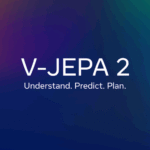The year 2024 has proven to be a landmark in the evolution of Large Language Models (LLMs), showcasing innovations that redefine how artificial intelligence interacts with text, images, and audio. From advanced multimodality to human-like reasoning, here’s an in-depth exploration of the top 10 LLMs of 2024 that are pushing the boundaries of what AI can achieve.
1. GPT-4o by OpenAI: A Multimodal Powerhouse
In May 2024, OpenAI launched GPT-4o, a groundbreaking extension of the already powerful GPT-4. This model excels at integrating text, image, and audio processing, making it a leader in voice recognition, multilingual understanding, and visual comprehension.
- Key Achievements: An impressive 88.7 score on the Massive Multitask Language Understanding (MMLU) benchmark demonstrates its enhanced reasoning and understanding.
- Applications: Useful in fields like healthcare, education, and entertainment where multimodal comprehension is vital.
2. o1 by OpenAI: Revolutionizing AI Reasoning
OpenAI took a bold step forward in September 2024 with the introduction of the o1 model, emphasizing reasoning capabilities. By reallocating computational resources to simulate “thinking” before responding, o1 is adept at handling scientific reasoning, coding, and solving complex problems.
- Why It Matters: Sets a new standard for human-like decision-making in AI systems, moving closer to emulating real-world problem-solving.
3. o3 by OpenAI: Pioneering Next-Generation Benchmarks
Released in December 2024, o3 represents a further leap in OpenAI’s advancements, building upon the strengths of o1.
- Innovations: Enhanced efficiency through o3-mini, a smaller variant tailored for more resource-constrained settings.
- Early Access: Currently in testing, o3 is poised to lead in safety and security research in AI.
4. Gemini 2.0 by Google DeepMind: A New Era in Multimodality
Google DeepMind released Gemini 2.0 Flash on December 11, 2024, expanding the boundaries of multimodality. This model is equipped to generate images and audio, reflecting Google’s vision for integrating AI into autonomous agents.
- Significance: Bolsters the application of AI in industries like robotics and gaming, where multimodal outputs are crucial.
5. Llama 3 by Meta: Benchmark Dominance
Meta’s Llama 3, introduced in April 2024, sets a high bar in LLM performance with its 8-billion and 70-billion parameter variants.
- Training: Trained on 15 trillion tokens, the 70B model outpaces competitors like Gemini Pro 1.5 in NLP and reasoning tasks.
- Applications: Its robust architecture supports chatbots, virtual assistants, and more.
6. Claude 3.5 by Anthropic: Speed Meets Precision
Anthropic unveiled Claude 3.5 in June 2024, building on the successes of its predecessors to deliver faster, more nuanced understanding.
- Strengths: Excels in areas such as mathematics, coding, and logical reasoning.
- Advancements: Marked as a milestone in scaling AI efficiency without sacrificing precision.
7. Grok-2 by xAI: Musk’s AI Vision
xAI, founded by Elon Musk, released Grok-2 in August 2024 as a competitive alternative to OpenAI’s GPT-4 and Google’s Gemini.
- Unique Focus: Designed specifically for Musk’s platform, X (formerly Twitter), it demonstrates improvements in user interaction while grappling with challenges like AI hallucinations.
8. Gemma by Google DeepMind: Lightweight and Open-Source
Introduced in February 2024, Gemma offers lightweight, open-source models tailored for diverse use cases.
- Design: Available in two sizes—7B (optimized for GPU/TPU) and 2B (for CPU/on-device applications).
- Utility: Its lightweight architecture enables widespread adoption in industries like retail and transportation.
9. Mixtral 8x22B by Mistral AI: Redefining Open-Source Efficiency
April 2024 saw the debut of Mixtral 8x22B, an open-source marvel with 141 billion parameters.
- Breakthrough: A transformative step in transformer-based architectures, offering a balance of power and efficiency.
- Adoption: Ideal for developers looking for scalable, cost-effective AI solutions.
10. Inflection-2.5 by Inflection AI: Proprietary Innovation
Inflection AI launched Inflection-2.5 in March 2024, focusing on natural language generation and understanding.
- Capabilities: While parameter specifics remain undisclosed, its versatility in AI-driven solutions like voice assistants is noteworthy.
- Role: Bridges the gap between proprietary advancements and practical implementations.
Conclusion: The Dawn of a New AI Era
The advancements in LLMs in 2024 highlight the relentless pace of innovation in AI. Each of these models introduces unique features, making them indispensable in domains ranging from healthcare to autonomous systems. As we move forward, the convergence of multimodality, reasoning, and efficiency will continue to redefine what’s possible with AI.








